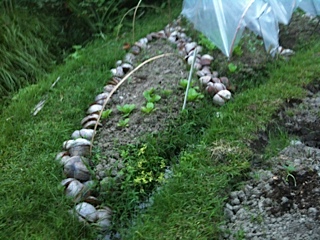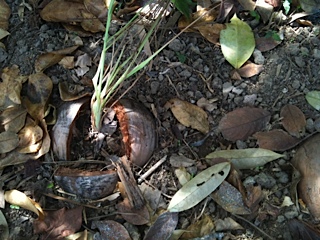Coconut Shells
/At Jiwa Damai we are using a special way to place our coconut shells around the base of our plants. Since we are producing our coconut oil form our own coconut trees , the shells are available and we are using them for several purposes. During the rainy season they can collect some of the water with their inner softer hairy material thus allowing to keep some water away form the plants.
The second reason is to have them soak up the water we are distributing in the dry season around the fields. They will hold the water longer for the plants to feed .
Last but not least when they decompose they will make an excellent nutrition to be added to the soil. On some plants we are just setting them directly around the root of the plants.



















